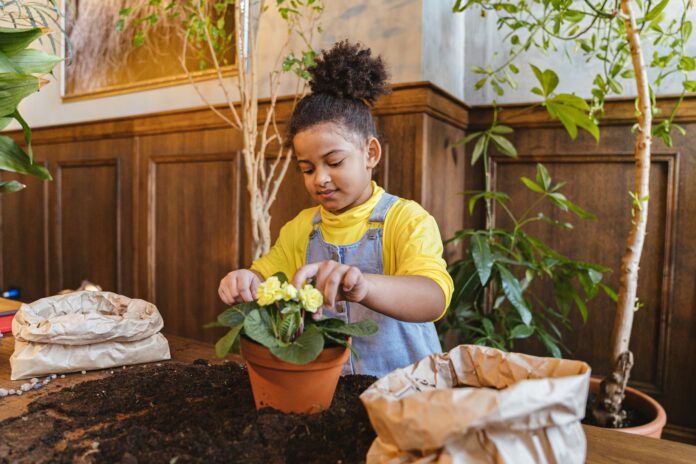
By
“Trees aren’t equitably distributed across all communities.”
As an urban reforestation advocate, Tanner Haid has seen lush, green trees line streets, providing shade in predominately-white, upper-class areas. Meanwhile, in neighboring ethnic and lower-income communities, the canopy of maples, oaks, and poplar trees is nearly absent.
This tree inequity — when one area has less coverage than others nearby — is common in historically Black cities.
The unequal distribution of trees robs Black and other people of color of cleaner, cooler air in their neighborhoods.
In March, Haid’s organization One Tree Planted, a non-profit on a global tree-planting mission, put 150 trees in the ground in New Orleans. In partnership with local supporters and residents, the crew planted along sidewalks in the Lower Ninth Ward.
He says the easternmost neighborhood is “a really critical place to be working” because it’s still recovering from Hurricane Katrina.
Katrina Destroyed 200,000 Trees in New Orleans
Before the storm hit in 2005, the Lower Ninth Ward had the city’s highest percentage of Black homeownership, although it was the poorest neighborhood.
Generations of Black natives spent their lives building and investing there. But along with destroying what they owned, the flooding also damaged the landscape that made the community beautiful — including the trees.
Cynthia Morrell-Guillemet, 78, witnessed the city she was born and raised in be wrecked by the waters.
“Most houses had to be totally torn down, and you had to build again from the ground up,” she says.
Right before the storm, she started renovating her childhood home since her parents had passed away, “then Katrina destroyed all of that.”
When she returned to rebuild her property around 2019 — almost 15 years after the storm — she realized the palm trees she adored were gone.
“There may be two or three blocks that have one palm tree, but it was beautiful [when they were] laid out,” she says. “All of those palm trees were destroyed.”
Crake myrtle trees planted between the street and sidewalk were also removed. But one local tree managed to brave the storm: a pecan tree Morrell-Guillemet’s father planted when she was growing up.
“That was the only thing that was left. That was the original,” she says.
The family tree is now joined by hundreds of newly-planted trees in the area with the help of One Tree Planted and a local organization, SOUL (Sustaining Our Urban Landscape).
Trees Heal the Mind and Body
Residents can expect to experience major benefits within 10 to 20 years.
“I hope I’m here to be able to see it,” says Morrell-Guillemet, a client service specialist for the Lower 9th Ward Homeownership Association.
People who live near trees receive a boost in their quality of life. Not only do trees lengthen lifespan and improve brain function, but they also lessen depression and anxiety.
Research has found that simply looking at trees reduces blood pressure and the stress-related hormones cortisol and adrenaline.
Susannah Burley, founder and executive director of SOUL, and her team chose to plant “water-loving” trees in bunches in Morrell-Guillemet’s community for disaster prevention.
“If you put them all on continuous streets and you have a hundred water-loving trees that are native, can withstand flooding, and are drinking up the water, you can really change how a neighborhood responds to a storm,” she says.
When the trees absorb the stormwater, less demand is put on the city’s drainage system. This is good news considering the impact of Katrina was due in part to the city’s failing infrastructure.
The trees will also help cool the city down — and that’s not just needed in New Orleans.
An estimated 1,300 people die from extreme heat in the U.S. every year. Due to redlining and other racist policies that result in living conditions with fewer trees and parks, Black people are especially at risk for heat exposure.
When Hurricane Ida swept through New Orleans in 2021, several people died from heat-related causes.
“It’s just unforgivable to me that people are dying after hurricanes from heat,” Burley says. “It’s ridiculous, you know?”
More Trees Are Coming to Underserved Communities
Burley’s efforts at SOUL are part of the organization’s citywide Reforestation Plan — a long-term strategy to build and protect local urban forestry, reduce heat, and lower household energy costs.
Due to buildings and asphalt that emit the sun’s heat, cities can be one to seven degrees hotter than surrounding rural and suburban areas.
This is known as the “heat island effect.”
While some people in hot cities opt to turn on their air conditioning to beat the heat, not everyone is as privileged.
“In low-income areas of communities, that’s not an option,” Haid says.
One Tree Planted will be planting trees in Detroit, Los Angeles, and New York next as part of its urban forestry initiative.
“Our mission as an organization is reforestation,” Haid says. “And how can we provide that mission in cities where — especially with disadvantaged, under-resourced communities…that are greatest in need based off of economic factors, historical injustices — how can we support them.”


